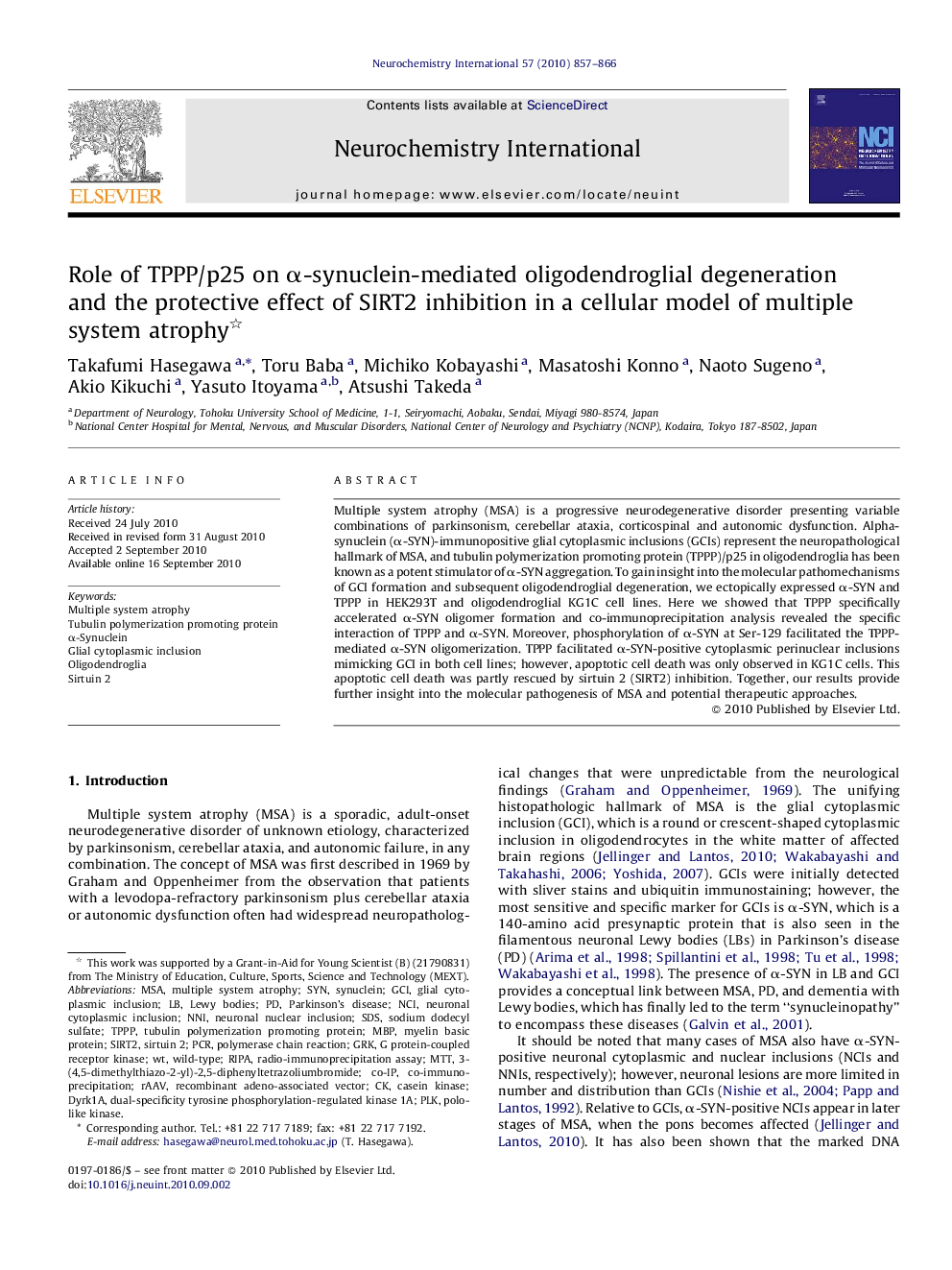| Article ID | Journal | Published Year | Pages | File Type |
|---|---|---|---|---|
| 2201117 | Neurochemistry International | 2010 | 10 Pages |
Multiple system atrophy (MSA) is a progressive neurodegenerative disorder presenting variable combinations of parkinsonism, cerebellar ataxia, corticospinal and autonomic dysfunction. Alpha-synuclein (α-SYN)-immunopositive glial cytoplasmic inclusions (GCIs) represent the neuropathological hallmark of MSA, and tubulin polymerization promoting protein (TPPP)/p25 in oligodendroglia has been known as a potent stimulator of α-SYN aggregation. To gain insight into the molecular pathomechanisms of GCI formation and subsequent oligodendroglial degeneration, we ectopically expressed α-SYN and TPPP in HEK293T and oligodendroglial KG1C cell lines. Here we showed that TPPP specifically accelerated α-SYN oligomer formation and co-immunoprecipitation analysis revealed the specific interaction of TPPP and α-SYN. Moreover, phosphorylation of α-SYN at Ser-129 facilitated the TPPP-mediated α-SYN oligomerization. TPPP facilitated α-SYN-positive cytoplasmic perinuclear inclusions mimicking GCI in both cell lines; however, apoptotic cell death was only observed in KG1C cells. This apoptotic cell death was partly rescued by sirtuin 2 (SIRT2) inhibition. Together, our results provide further insight into the molecular pathogenesis of MSA and potential therapeutic approaches.
Research highlights▶ A direct interaction is observed between α-SYN and TPPP/p25. ▶ Coexpression of α-SYN with TPPP induces SDS-stable α-SYN aggregates in concomitant with development of inclusions. ▶ The process is accompanied by a reduced proliferation and activation of caspase 3 in oligodendroglial KG1C cells but not HEK293T cells. ▶ The SIRT2 inhibitor AGK2 dose dependently rescues proliferation, enhances formation of inclusions and blocks caspase-3 activation.
